From Mavilaru to a new era
by Dhaneshi YATAWARA
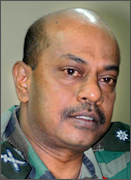
Maj.Gen. Mendaka
Samarasinghe |
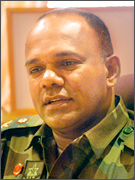
Maj.Gen. Daya
Ratnayake |
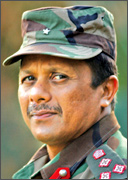
Maj.Gen. Prasanna de Silva |
The July 21, 2006 started as usual, except for the smell of anxiety
was felt in the air due to the frail situation the Cease Fire Agreement
between the Sri Lankan Government and the LTTE has approached. In this
tensed backdrop the then General Officer Commanding Sri Lanka Army's 22
Division at Plantain Point, Trincomalee Major General Mendaka
Samarasinghe (then Brigadier) received a call from Kallar Brigade
Commander, Brigadier Sarath Wijesinghe (then Lt.Col) conveying
disturbing news, "the farmers in the Mavilaru area (areas that were
under the Government control) have complained that the water level of
the irrigation canals had dropped and what was left out were totally
inadequate for cultivation, " said Maj. Gen. Mendaka Samarasinghe, now
the Chief of Staff of the Sri Lanka Army, explaining the origin of the
Ealam war IV.
According to the demarcations set by the Cease Fire Agreement (CFA),
the Mavilaru sluice gates were located in an area that was neither
supervised by the Sri Lanka Army (SLA) nor by the LTTE, except for
random patrolling by the troops.
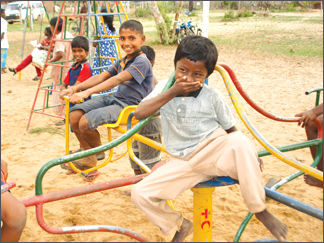
In a new children’s play ground in Vakarai |
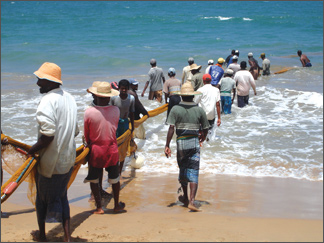
Fishing in full scale in the Eastern coast |

A renovated school in Kathiraveli, Batticaloa |
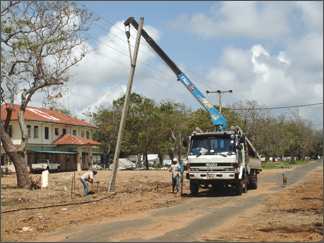
Setting up electricity power supply system near Vakarai hospital |

A housing project in Vakarai |
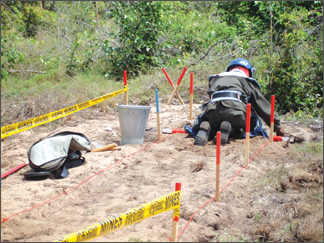
Demining in the liberated areas |
As it was not the dry season the drop in the water level was unusual
for the farmers.
With information from the village farmers, Maj. Gen. Samarasinghe
ordered the 22-2 Brigade Commander to ask the Irrigation Officer of the
area to visit the Mavilaru sluice gates, situated approximately two
kilometres from the Kallar town and report whether there were any
problems. Unexpectedly, the Irrigation officer was sent back by the LTTE
who were blocking the road just one kilometre before the sluice gates.
It was obvious by then that the LTTE have closed the water supply to the
paddy lands.
It was in 2006, Vellupillai Prabhakaran said in his annual address
that the LTTE would 'renew their struggle' if the Government failed to
make serious moves towards peace. The Government was always pressured to
accept the LTTE's so-called proposals in setting up their mono-ethnic,
hypothetical state, leaving no room for the aspirations of the ordinary
Tamil man!
At the time of the closure of Mavilaru anicut, the LTTE had plentiful
chances for peace talks as the co-chairs of the Tokyo Donor Conference
called on both parties to return to the negotiating table. Talks
continued amidst LTTE violence for some time and recommenced in
February, 2006 with the intervention of Norwegian Special Envoy Eric
Solheim.
Separatist ideologies
Having no other means of reaching their separatist ideologies the
LTTE took the lives of innocent farmers of the East hostage. "The
farmers were pleading for early action to release the water. I
immediately informed the Army Headquarters and as it was the time of the
Cease Fire Agreement we informed the Sri Lanka Monitoring Mission (SLMM)
to negotiate with the LTTE and open the sluice gates quickly," Maj. Gen.
Samarasinghe added.
Nearly 26,000 people of Sinhala, Tamil and Muslim families living in
Kallar, Seru Nuwara, Seruvila, Dehiwatta and Neelapola were severely
affected by the loss of water supply and the threat to paddy
cultivation, extending over 45,000 acres of land. As the situation
showed no progress, the 22 Division GOC also moved into Kallar area. The
clock was ticking and the damage to the paddy cultivation of the poor
farmers was getting from bad to worse and much of the crop was damaged.
"These innocent people had no other means of income and many of them
cultivated under adverse financial situations. They were helpless,"
Maj.Gen. Samarasinghe added. LTTE had timed it very well to make the
lives miserable for the farmers.
The Army received orders to launch a limited operation to open the
sluice gates few but there was heavy resistance from the LTTE.
Observing the situation in the country including the massacres and
mayhems of the marauding Tamil Tigers, President Mahinda Rajapaksa as
the Commander-in-Chief stressed that 'enough was enough'! The Army
received orders to launch an operation to liberate Mavil Aru from the
iron clutches of the LTTE. Hence the operation to liberate Mavil Aru was
launched on July 26, 2006 purely on humanitarian grounds as the
responsibility of bringing relief to the cultivation fell on the
shoulders of the Government.
While the Mavil Aru operation was on, the LTTE attacked the Muttur
Naval jetty (located south of Trincomalee) and subsequently the Army
camp at Kattaparichchan forcing the SLA to defend two battle fronts. The
Muttur attack by the LTTE literally displaced over 42,000 Muslim
civilians.
The SLA Commando Brigade under Maj. Gen. Chagie Gallage (then Colnel)
as the Brigade Commander operated under the command of 22 Division
during the initial stages of Mavil Aru liberation and in liberating
Muttur.
In Muttur, the LTTE cadres were mingling freely with the civilians
while the troops with utmost care liberated Muttur. The Army could not
use their maximum firepower. Next, the Special Forces Brigade was
deployed to liberate Mavil Aru commanded by Maj.Gen. Prasanna de Silva
(then Colnel).
Welfare camps were set up in Kantale to shelter the displaced Muslim
civilians and the Operation was concluded enabling all displaced people
to return home after LTTE terrorists were totally wiped out.
Following the complete re-capture of Muttur and Kattaparichchan,
troops successfully re-captured the Mavil Aru anicut on August 08, 2006
and water started flowing back to the already dried and hardened paddy
fields.
"Especially during the Muttur liberation we had to limit ourselves to
small arms and keep a sharp eye on the paths the civilians took to
escape," Maj. Gen. Samarasinghe added.
Soldiers were instructed not to direct attacks on civilian escape
routes and at several instances the LTTE tried using these paths to
launch attacks on Army defence lines.
Crucial factor, civilians
While the 22 Division was rescuing the areas in Trincomalee the SLA
23 Division was given the task to liberate un-cleared areas in
Batticaloa district especially Vakarai under the Command of GOC Maj.Gen.
Daya Ratnayake (then Brigadier).
LTTE terrorists who fled from Sampur in South of Trincomalee to
Vakarai area used nearly 40,000 civilians, from all walks of life, as a
human shield. It was during this time LTTE fired artillery targeting
children at the Somadevi school in Somapura.
To liberate innocent civilians from the LTTE the Army had to capture
Verugal, Kathiraveli, Panichchankerni, Komathalamadu and Vakarai. "The
crucial factor we faced was eliminating terrorists maintaining zero
casualties on civilians," Maj. Gen. Rathnayake said recalling the Ealam
war IV.
Vakarai, Verugal areas became the centres of gravity as the LTTE has
set up their Eastern Headquarters in this area surrounded by the
civilian settlements.
"For the Army this was the seventh time Vakarai was captured during
the past 30 years and each time it did not take more than three days.
Yet at this stage we spent three months demarcating civilian settlements
from the enemy's as our main aim was to rescue the people unharmed " he
added.
"Soldiers very professionally handled the civilian factor as they
were specifically instructed on the humanitarian aspect of the
operation. It was purely a rescue mission," Maj.Gen. Ratnayake added.
"In fact we had to use special tactics to make the terrorists come
out of their hiding places, separate them from civilians and their deal
with them. Soldiers made great sacrifices to make this a success," Maj.
Gen. Ratnayake added elaborating on that extra steps our valiant
soldiers took to rescue the innocent civilians.
 |
| Plenty of
water for cultivation |
For the soldiers, they knew the people were suffering and their main
aim was to save them first. In order to house the escaping civilians,
the Army under the directions of Maj.Gen. Ratnayake set up five
reception centres.
"We knew the key factor for success was winning the hearts and minds
of people," he stressed. As soon as the escapees reached the Government
controlled areas the Army personnel served them with tea or cool drinks.
Mission successful
"Villagers also came to help us to cook meals for the Displaced
civilians and we treated them as best as we could," he said. "During
this period Senior Presidential Advisor and Parliamentarian Basil
Rajapaksa also visited our division and when we informed him about the
immediate requirements to accommodate the people he promptly directed
all assistance be provided. The support of the Government at this point
was very important," Maj.Gen. Ratnayake added.
The Army provided not just food, water and medical care but music and
films as well. "It was very important to keep the peoples' happy as they
were passing through the most horrible time of their lives," he said.
As a result of all these efforts, 39 escapees volunteered to return
to areas under LTTE stronghold and direct others in to the Government
controlled areas. The mission was a success.
"Safety of the civilians was the crucial factor," said Maj. Gen.
Prasanna de Silva (then Brigadier) who was the Brigade Commander of the
Special Forces Brigade.
During Vakarai operation, without invading the enemy line the Special
Forces along with several other infantry battalions, encircled the enemy
terrain, while providing safety passage for the civilians to vacate and
finally went for the assault, Maj.Gen. de Silva explained.
Out of all the operations carried during the Eastern humanitarian
mission saving civilians was the most crucial. It required extra
commitment from the Army as their target was not just causing maximum
attrition to the enemy.
Meanwhile there was a major setback to the LTTE in the Eastern wing.
The then Eastern Commander 'Colonel' Karuna (Vinayagamoorthy
Muralitharan) and several other LTTE Leaders Prabhakaran's most trusted
leaders pulled nearly 5000 cadres out of the LTTE. Later they renounced
terrorism and joined the country's democratic mainstream.
While the Eastern theatre was getting hot the LTTE continued killing
political leaders, representatives of the Tamil people, and moved ahead
in recruiting children and threatening Government administration.
The Government faced the next challenge after freedom dawned on the
East on July 19, 2007. The Government was entrusted with the task of
rebuilding the East. Resettling the Internally Displaced Persons (IDPs)
was most crucial. It was President Mahinda Rajapaksa who took the
responsibility of reawakening the Eastern Polity. De-mining and removal
of booby traps followed.
The Government launched its resettlement programmes in June 2007 and
conducted them according to the accepted international standards.
The resettlement process was done in phases along with the de-mining
process as the area was heavily mined by the LTTE.
The Government took the burden in providing all logistical services
and essential items and the UN agencies and other I/NGOs made it a point
to provide other relief items. Food and nutrition, water supply,
housing, livelihood support and road and transport, health and
education, public service and religious activities were given priority.
Surveys had clearly identified fisheries, agriculture and various
types of small industries such as carpentry, tailoring, dressmaking
should be encouraged as livelihood means for the people.
Finally the Government is committed to ensure that the development of
the East should have the active participation of the people.
Now the Sun that rises in the East heralds a new era to its long
suffered people. |

